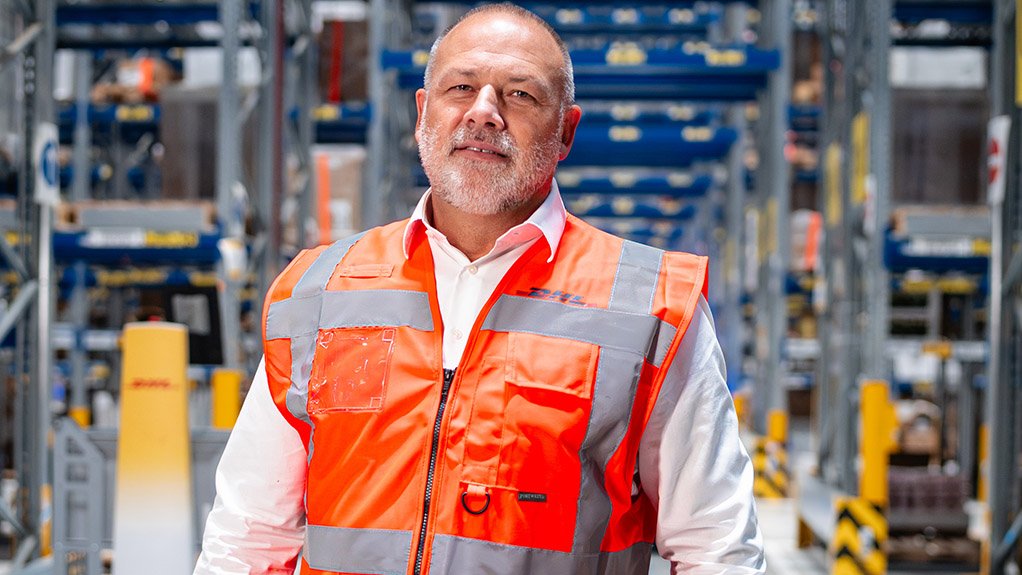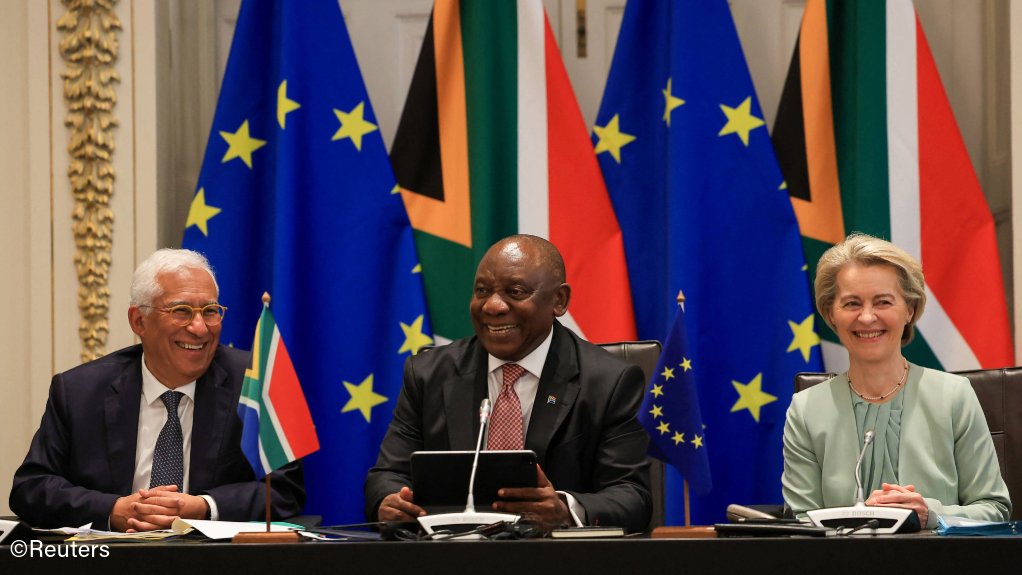JOHANNESBURG (miningweekly.com) – South Africa’s world-leading platinum group metals (PGMs) endowment received a major boost last month when European Commission President Ursula von der Leyen referred specifically to clean energy and green hydrogen forming the main part of a R94-billion (€4.7-billion) new EU investment package.
Amid annual trade between South Africa and the EU being close to €50-billion – and with 98% of South African exports to the EU being duty-free and quota-free – Von der Leyen said the beneficiation of South Africa’s metals and minerals would result in the creation of quality South African jobs.
The Clean Trade and Investment Partnership would, Von der Leyen added, support South Africa in adding more value to local production in South Africa, for instance in the clean hydrogen value chain.
“You have clean energy in abundance, from wind to sun. You have raw materials that are critical for electrolysers, including 91% of the world’s PGM reserves, and you have a rising industry to produce clean hydrogen and strong export ambitions” – a very encouraging comment that marks a potential defining moment for South Africa’s role in the global shift towards sustainable energy.
Interestingly, South African PGM companies are helping to fund the development of liquid organic hydrogen (LOHC) technology, which enables the use of existing logistics infrastructure in transporting green hydrogen.
But turning all this into reality requires more than capital, DHL Supply Chain Europe, Middle East Africa (EMEA) CEO Hendrik Venter points out.
“It demands robust, future-proof logistics infrastructure that can support the complex production, storage, and transportation of green hydrogen and its derivatives. We need strong, scalable supply chains that connect production sites to global demand efficiently, safely and sustainably.
“The complexities of hydrogen logistics—such as the need for specialized containers, export-ready infrastructure, and safe handling of LOHCs and ammonia derivatives—underscore the importance of investing in the right logistics backbone from the start.
“Success will depend on how well we prepare our ports, roads, rail, and storage networks to accommodate hydrogen at scale,” Venter outlines in a media release to Engineering News & Mining Weekly.
ECONOMIC IMMENSITY
The benefits of getting it right extend far beyond the energy sector. The South African government projects that green hydrogen could contribute 3.6% to GDP and generate over 380 000 jobs by 2050.
Integrating local businesses and small and medium-sized enterprises into the green hydrogen supply chain will accelerate industrial development, drive innovation, and stimulate economic growth at community-level.
“Large-scale projects like these can’t exist in isolation. They bring opportunity for an entire ecosystem of local suppliers, innovators, and entrepreneurs,” says Venter, who oversees 23 country markets, in which carbon-neutral warehousing, waste reduction, and transportation emission control are pursued.
“Policy certainty, cross-sector collaboration, and investment in enabling infrastructure must go hand-in-hand. Government, industry, and logistics partners need to work together to create the regulatory and operational conditions that support long-term success,” adds Bonn-located Venter, who has been instrumental in establishing ASMO, a joint venture between DHL and Aramco, as a Middle Eastern logistics and procurement hub.
Collaboratively, the World Platinum Investment Council fully endorses the far-reaching observations of Von der Leyen, who was accompanied at the EU-South Africa Summit hosted by South Africa President Cyril Ramaphosa in Cape Town, by European Council President António Costa.
During the summit, the EU and South Africa agreed to start talks as part of a Clean Trade and Investment Partnership, with South Africa being the world’s first country to sign such a partnership, which focuses on the clean energy transition, skills and technology, as well as on developing strategic industries along the entire supply chain – thus creating good jobs in South Africa and Africa.
The bulk of the €4.7-billion Global Gateway investment package – €4.4-billion, in fact – is earmarked for projects supporting South Africa’s crucial Just Energy Transition and represents a significant pledge in the context of the Scaling up Renewables in Africa campaign, launched by Von der Leyen and Ramaphosa on the margins of the G20 Summit in Rio de Janeiro last year.
Since joining DHL Supply Chain in 2009, Venter has held various management positions, starting as director of healthcare, technology, and automotive in South Africa.
From 2013 onwards, he served as MD in Poland, and in 2015, he was appointed CEO of Central Europe, later expanding his responsibilities to include Eastern Europe. Since 2019, he has led the DHL Supply Chain EMEA region.
EMAIL THIS ARTICLE SAVE THIS ARTICLE ARTICLE ENQUIRY FEEDBACK
To subscribe email subscriptions@creamermedia.co.za or click here
To advertise email advertising@creamermedia.co.za or click here













